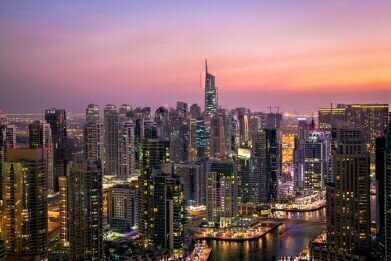Air Clean Up
How Many Deaths Does Middle East Pollution Cause?
Sep 03 2020
Air pollution claims the lives of 65,000 people living in the Middle East each year, according to a new study from Greenpeace. The research only factored in contamination caused by manmade activities, such as burning fossil fuels, rather than natural sources of pollution like dust storms or extreme weather events.
The findings are an important wake-up call for a region which has historically relied on oil, gas and coal for both its energy needs and its economic prosperity. The authors claim that nations in the Arab Gulf should take advantage of the year-round sunshine that the region enjoys and invest heavily in solar power as a means of transitioning away from damaging fossil fuels.
A high price to pay
Many Middle Eastern nations have built up huge wealth funds due to the natural reserves of oil and gas located beneath their territory. However, the new report from Greenpeace, entitled Toxic Air: The Price of Fossil Fuels, sheds light on the human cost of extracting and combusting those pollution-heavy materials.
The results showed that Egypt had the highest number of total deaths caused by air pollution in the MENA region at 32,000 per year, but Lebanon’s death rate per capita (0.39 per 1,000 people) was the most concerning. The UAE did not escape reproach, however. Dubai was listed as the most contaminated city in the Gulf and the 10th dirtiest city worldwide for nitrogen oxides (NOx).
A time for change
Those behind the study have used it to highlight how drastic changes must take place urgently if the Middle East is to avoid losing more lives to this manmade killer. “Most of the Middle Eastern countries, their power sector or transport sector is relying on fossil-fuel usage – mainly oil and gas, and diesel,” explained Julien Jreissati, who works as Greepeace’s programme manager for the region.
“The Gulf region has one of the highest [amounts] of solar energy in the world. They need to invest more and more in the solutions.” Additionally, Jreissati champions a transition to cleaner forms of transportation and says that governments can take the first step by announcing phase-out dates for petrol and diesel vehicles.
Leading by example
While the UAE may have much work to do, it’s far from alone in that respect - more than half of EU states are unlikely to meet their 2020 targets with regard to their national emissions, while more than 80% won’t achieve their 2030 goals. However, the UAE are at least putting in place the initiatives to move things in the right direction.
For example, the country has made huge investments in solar power in recent years. The Al Dhafri plant in Abu Dhabi will become the largest single-site solar farm on the planet upon its completion, with a total capacity of 2GW. Meanwhile, work is still ongoing at the Noor plant in Abu Dhabi and the Mohammed bin Rashed Al Maktoum Solar Park in Dubai, demonstrating how the UAE could become a regional leader in renewable energy in the near future.
Events
May 05 2024 Seville, Spain
May 13 2024 Munich, Germany
May 23 2024 Beijing, China
May 23 2024 Beijing, China
Jun 10 2024 Algiers, Algeria














